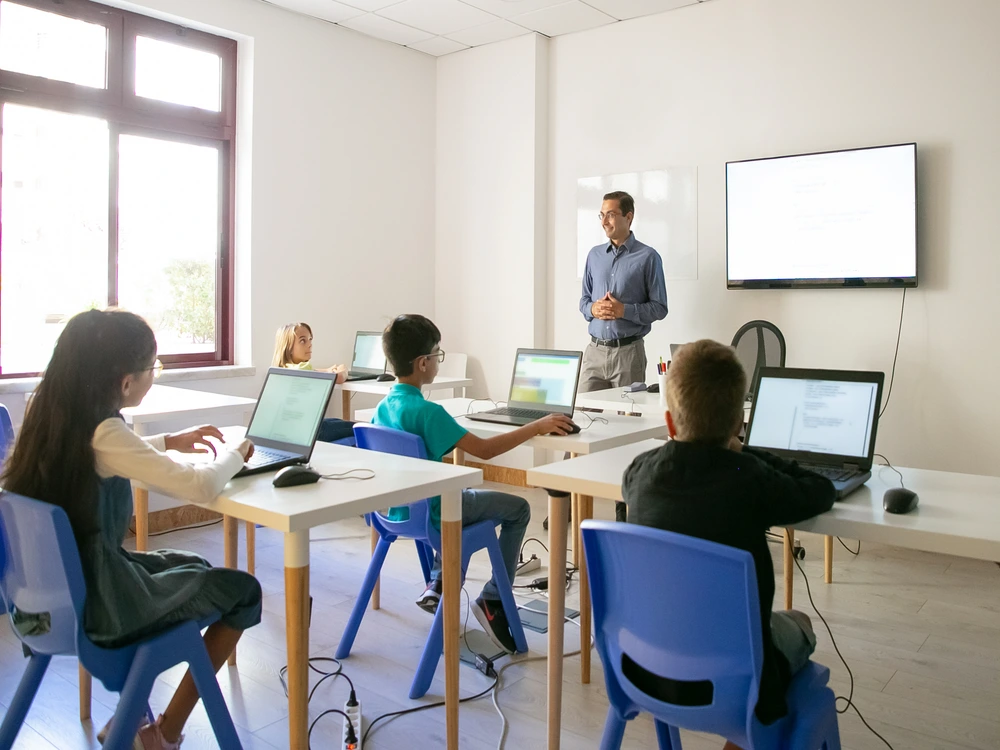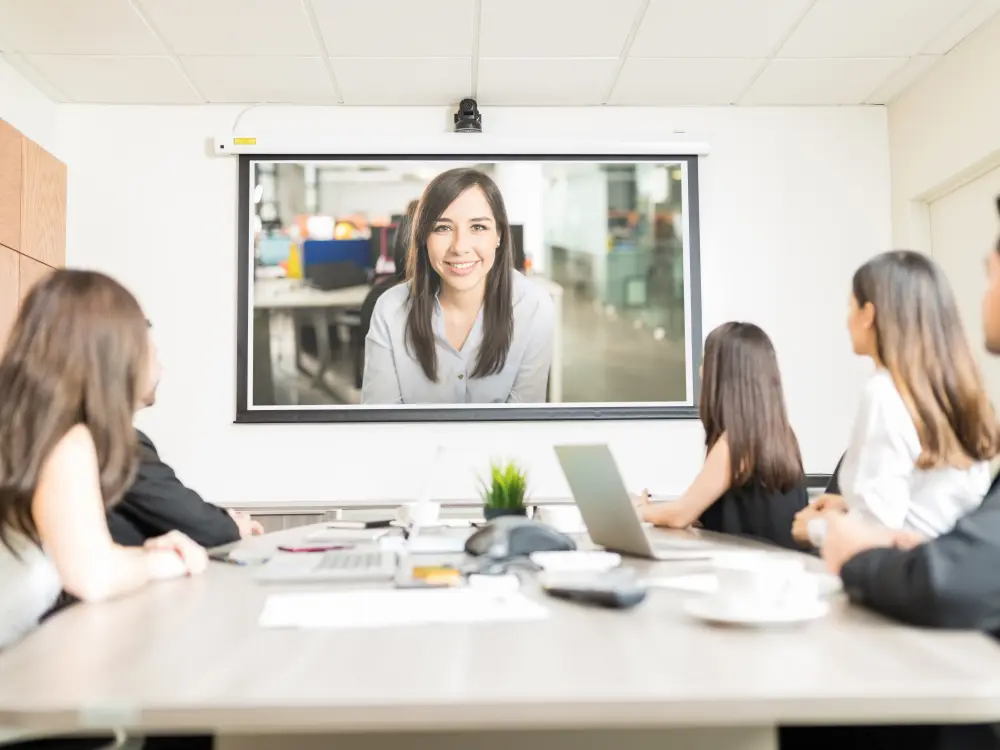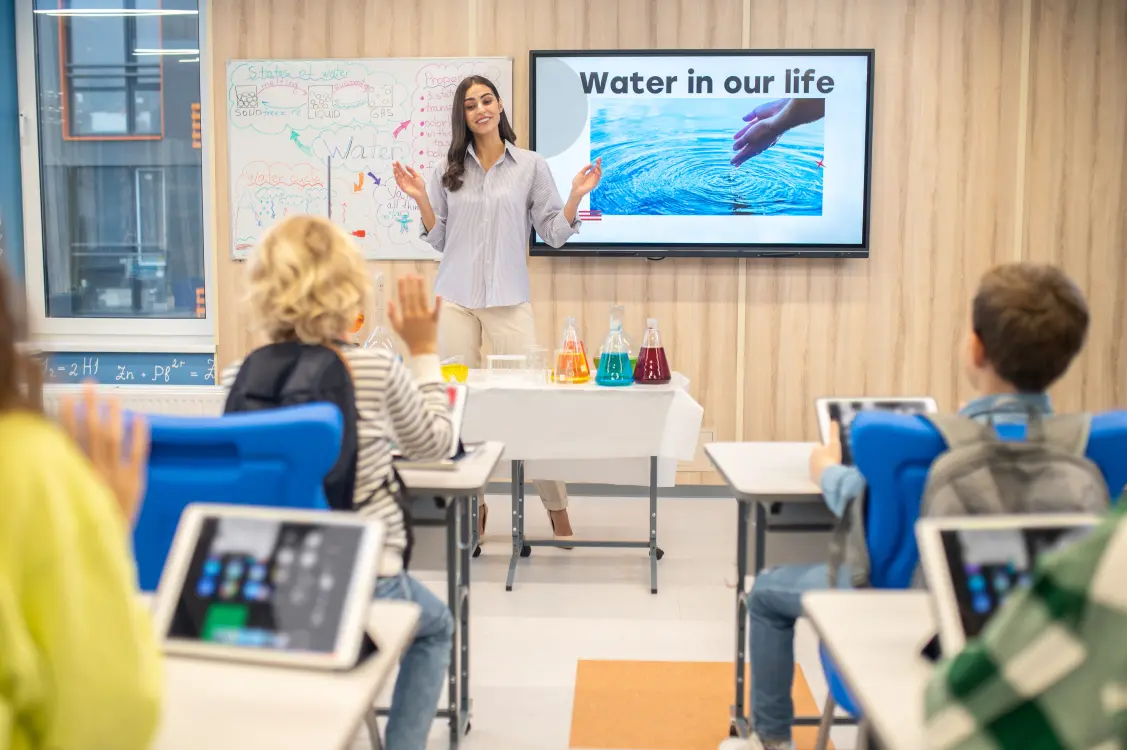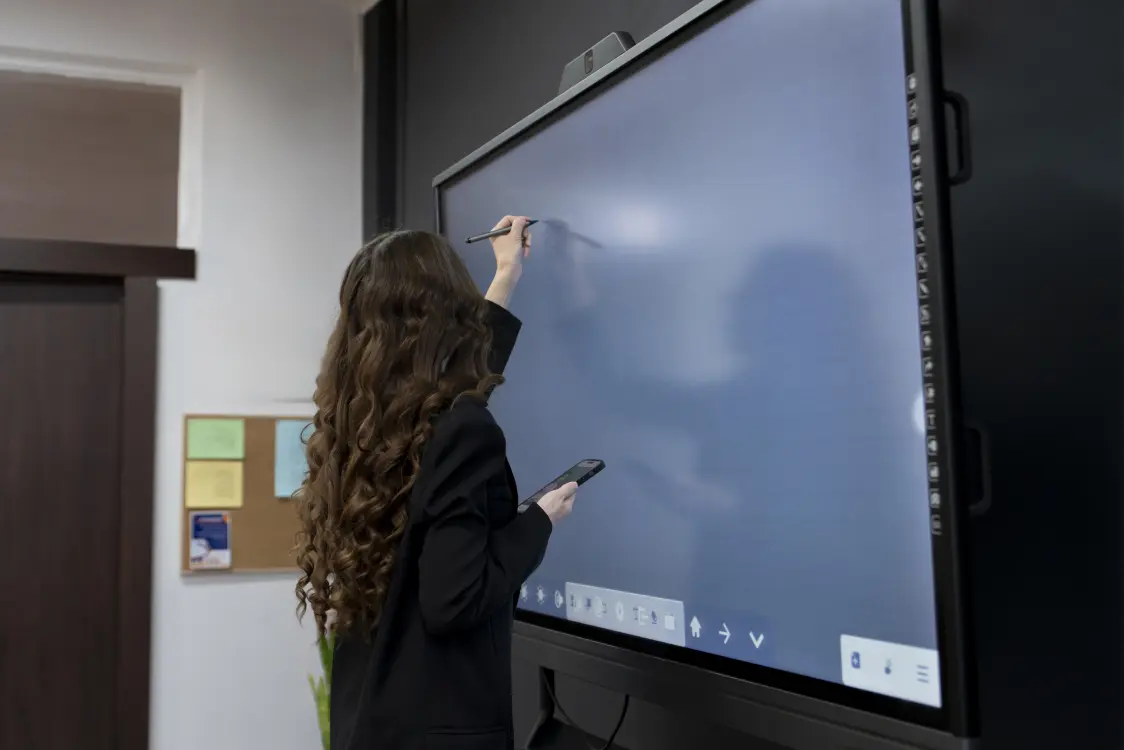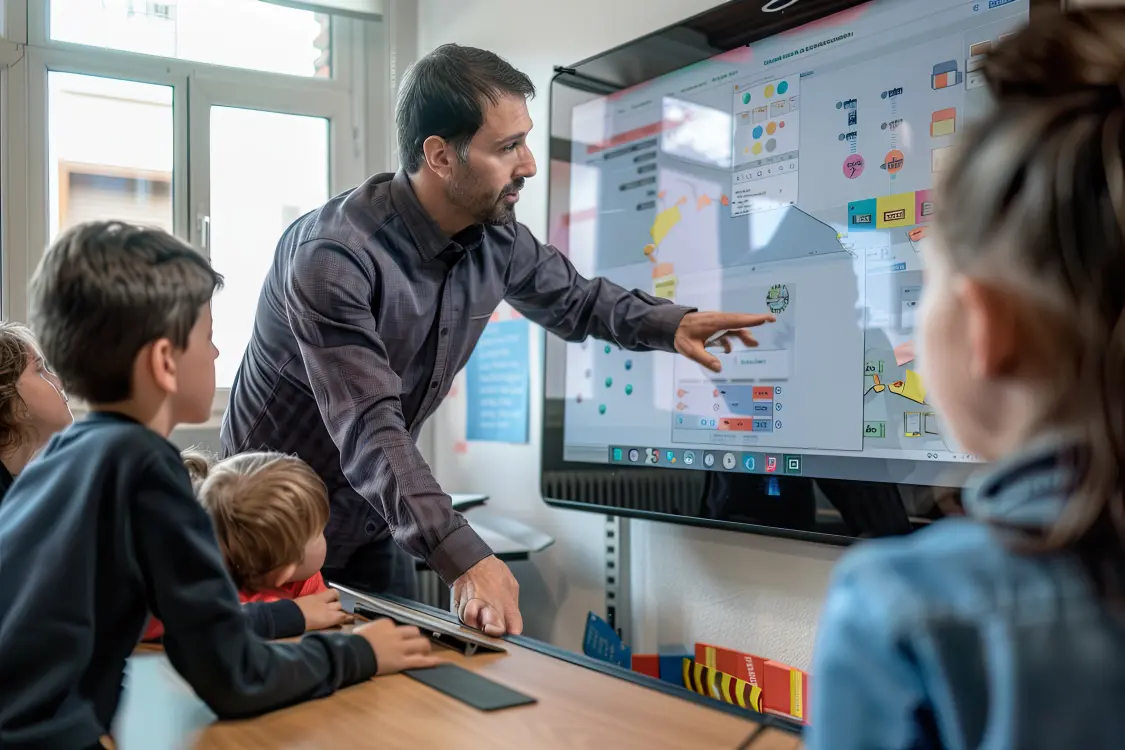Transforming Education: How Smartboards Power the Future of Smart Classrooms
In recent years, education has undergone a remarkable transformation, with interactive learning with Smartboards becoming a key driver of this change. The traditional chalk-and-talk method is evolving into a more interactive, engaging, and technology-driven approach. At the heart of this change lies the Smart Classroom — a digitally empowered learning environment designed to inspire collaboration and active participation. One of the most significant innovations driving this shift is the Smartboard.
What is a Smart Classroom?
A smart classroom is a modern learning space equipped with advanced technology to enhance the teaching and learning process. It combines hardware like Smartboards, projectors, and interactive displays with software solutions such as virtual learning platforms, collaboration tools, and real-time assessment systems. Instead of relying solely on textbooks and whiteboards, teachers can integrate multimedia resources, real-time discussions, and interactive activities to create a dynamic learning experience.
Smart classrooms are not just about adding gadgets — they represent a shift in mindset. The goal is to make education more inclusive, engaging, and adaptable to diverse learning styles.
The Role of Smartboards in Smart Classrooms
A Smartboard is an interactive display that functions as both a teaching tool and a collaboration platform. It allows teachers to project lessons, annotate directly on the screen, and interact with multimedia content in real time. Students can also participate actively by writing, drawing, or solving problems directly on the board.
Key Benefits of Using Smartboards in Smart Classrooms:
-
Enhanced Engagement
Traditional lessons can sometimes feel passive, but Smartboards bring content to life with videos, animations, and interactive elements. Students remain more attentive when they can see and touch the learning material. -
Collaborative Learning
Students can work together on group activities, solve problems as a team, and present their findings on the Smartboard. This encourages peer-to-peer learning and improves communication skills. -
Real-Time Feedback
Teachers can conduct live polls, quizzes, and short exercises to instantly gauge student understanding. This helps them adjust their teaching pace and style to suit the class’s needs. -
Access to Global Resources
Smartboards are internet-connected, enabling educators to bring real-world information into the classroom. They can access news articles, educational videos, and global databases in seconds. -
Multi-Device Integration
Teachers can connect laptops, tablets, and even smartphones to the Smartboard, making it easy to display documents, presentations, or live demonstrations from multiple sources.
How Smartboards Transform Teaching Methods
Smartboards shift the role of teachers from lecturers to facilitators. Instead of standing in front of the class and speaking for an hour, teachers can create activities where students interact with the content directly.
-
Science: Display interactive 3D models of the human body, chemical reactions, or space exploration. Students can rotate, zoom, and explore in detail.
-
History: Use interactive maps, timelines, and virtual museum tours to make past events come alive.
-
Mathematics: Draw graphs, solve equations step-by-step, or use geometry simulation tools to help students visualise concepts.
-
Languages: Play audio clips, engage in pronunciation exercises, and use interactive vocabulary games.
Preparing Students for a Digital Future
We live in an era where technology is essential in almost every profession. By incorporating Smartboards into the classroom, students not only learn subject content but also develop digital literacy, problem-solving, and teamwork skills. These competencies will benefit them in higher education and the workplace.
Smart classrooms also foster creativity. Students can create multimedia presentations, design projects collaboratively, and share their work instantly with peers or teachers. This encourages innovation and confidence.
Overcoming Implementation Challenges
Introducing Smartboards into classrooms requires careful planning. The main challenges are:
-
Cost of Investment: Schools must budget for both the hardware and software needed.
-
Teacher Training: Technology is most effective when educators are confident using it. Ongoing training ensures Smartboards are used to their full potential.
-
Maintenance & Support: Schools should have reliable technical support to address issues quickly.
While these challenges exist, the long-term educational benefits far outweigh the initial effort. Improved student engagement, better learning outcomes, and future-ready skills make Smartboards a wise investment.
Conclusion
The Smart Classroom is not just a passing trend — it’s a vision of the future. Smartboards are a cornerstone of this transformation, turning ordinary lessons into interactive, collaborative experiences. By adopting this technology, schools can create learning environments that inspire curiosity, encourage participation, and prepare students for success in the 21st century.
Education is no longer about memorising facts — it’s about connecting, collaborating, and creating. With Smartboards leading the way, smart classrooms are making that vision a reality.By adopting interactive learning with Smartboards, schools can inspire participation and improve learning outcomes.

